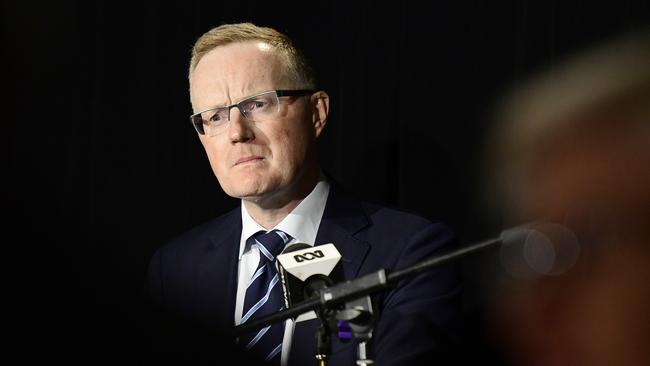RBA keeps rates on hold as trade tensions roil markets
The RBA has left rates unchanged after cutting in June and July, as it dimmed its growth forecasts for the year.

The Reserve Bank of Australia has taken a pause from lowering interest rates in August but leaves the door open to expanding on the cuts made in June and July, citing a weak inflation outlook and flagging a deteriorating global growth outlook.
In a statement the RBA said it decided to leave the cash rate unchanged at 1.00 per cent.
The widely-expected decision to leave monetary policy unchanged came after the RBA cut rates in June and July in an attempt to lift growth and lower unemployment to levels consistent with its estimate of full-employment, thereby restoring inflation to its target band.
The central bank also flagged that it will basically maintain its economic forecasts in its quarterly Statement on Monetary Policy on Friday.
It sees domestic GDP around 2.5 per cent in 2019 rising to 2.75 per cent over 2020, core CPI “a little below “ 2 per cent in 2020 and “a little above” 2 per cent in 2021, and unemployment falling to around 5 per cent over the next couple of years.
These compare with its May SOMP forecasts of GDP at 2.6 per cent in 2019 and 2.7 per cent in 2020, CPI at 2.0 per cent in the year to June 2020 and 2.1 per cent in the year to June 2021, and an unemployment rate of 4.8 per cent by mid-2021.
These forecasts are somewhat optimistic versus consensus market predictions, which has priced in at least two more rate cuts, as assumed by the RBA.
Still, the RBA used slightly more dovish language relative to its July statement, noting its preparedness to”ease” if needed rather than just “adjust”, as it said last month.
The minutes also suggested the RBA is unlikely to be satisfied with an unemployment rate of “around 5pc”, given its recent analysis that the non-accelerating inflation rate of unemployment has fallen to 4.5 per cent.
The Australian dollar hit an intraday high of 67.95 cents but the unemployment forecast suggests more stimulus (either monetary or fiscal) will be needed beyond market pricing for a cash rate of below 0.5 per cent by March 2019.
At its meeting today, the Board decided to leave the cash rate unchanged at 1.00 per cent - https://t.co/8qUhPhSByq
— RBA (@RBAInfo) August 6, 2019
“The increased uncertainty generated by the trade and technology disputes is affecting investment and means that the risks to the global economy remain tilted to the downside,” RBA Governor Philip Lowe said in a statement.
The recent escalation of the US-China trade dispute and subsequent risk aversion in global markets has added to expectations of further cuts by the RBA, with the money market now priced for a 0.75 per cent cash rate by next month and a 0.5 per cent rate by February.
Concern about the trade war has also seen the market start to price in a sub-0.5 per cent cash rate for the first time.
The RBA is one of several major central banks that are lowering interest rates--partly in response to slowing global growth as trade relations between China and the US continue to disintegrate. As a major exporter of iron ore to Chinese steel mills, Australia is directly exposed to the trade dispute.
The moribund interest-rate outlook is behind the biggest rally in Australian government bonds since the 1980s. Australia’s yield curve has flattened, with the yield on 10-year government bonds falling below 1 per cent for the first time earlier Tuesday.
The Aussie economy is getting some support from high iron-ore prices, which helped deliver a record trade surplus in June of $8bn. Economists expect second-quarter GDP growth will get a boost from the booming trade sector.
With Dow Jones





To join the conversation, please log in. Don't have an account? Register
Join the conversation, you are commenting as Logout